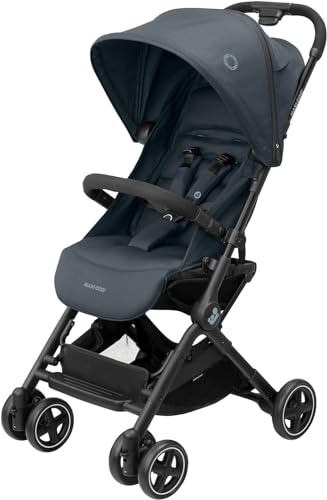Why You'll Want To Find Out More About Pushchair Single

What is a Pushchair Single?
A single pushchair is designed to hold just one child. Some are able to be used as early as birth using an infant car seat or carrycot. Some are lightweight and can transform into double.
It has a modern, sleek design and features that make it a popular with families, like height-adjustable handlebars and large shopping basket. It also boasts machine-washable fabrics as well as a footmuff, essential for colder weather.
Convertible
Convertible strollers are a fantastic option for parents who need a stroller that will grow with their child. Push Chairs & Prams UK of stroller has a hammock seat that converts into a carrycot, and it's a comfortable choice for infants. It's also easy to fold from the handlebar, and light to drive.
A first-of-its-kind model, the Larktale crossover is a stroller/wagon that easily transforms into a double-seater, with no tools needed. It is equipped with many features that make it an ideal choice for parents, including the large undercarriage as well as an organizer hanging by the push bar in both modes. There are a few disadvantages that aren't obvious, like the zipper to attach the back of the seat in wagon mode as well as the size of the cup holders.

Brakes
A good pushchair single will come with a couple of brake systems. The hand brake is typically a small, lever-like thing on the chassis. You can turn it down to stop the pushchair and then push it back up to continue. This is extremely useful on urban terrain where you need to reduce speed quickly, or on the pavements of shopping centres where you might have to wait for pedestrians. The front wheel brake system is present on high-end pushchairs, such as the phil&teds Dash and Bugaboo Cameleon 3. It is activated in the same manner as the brake on a bicycle. This is particularly useful when you're crossing rough terrain or while running, as it stops the pushchair right away and ensures your child's safety.
The left coupling 171 that connects the rear legs 57 and 19 comprises a rod for mounting the rear leg 173 to which the rear leg 57 can be fixedly connected, a gear placed on the side surface 163 inside hub 3 of housing 33; a bushing 177 connected to the gear 175 that extends through a slot provided at the end of mounting bar 173 and a wire that is arranged to wrap around a J-shaped spool 181 and the post 31 of front leg 19. The left coupling system 171 used for the rear leg 57 and the front leg 19 comprises a rear leg mounting bar 173 to which the rear 57 is fixedly joined; a gear 175 mounted on a side surface 163 of the housing 33 disposed within hub 3; the spool component 181 as well as the post 31 of the front leg 19 are wrapped around the spool component J-shaped 181 in corresponding slot 179 at the end of the mounting bar 173 and a coiled cable.
The brake system 215 includes an initial end 227 that is designed to be in contact with the braking cam when the braking cam is in the second position, and an additional end 229. The second end of the lever for braking is equipped with a number of teeth 231. The teeth are configured to encircle the teeth 232 of a gear 233 driven by a first rear wheel 59 on stroller 1. When the brake lever pressed the braking cylinder blocks the rotation of the first rearwheel 59 of stroller 1. The braking system is operated by hand.
Seat unit/carrycot
A single pushchair is a type of infant travel unit for older babies (6 months or more) who are starting to sit and look around the world. They are often converted into prams. Prams are more sophisticated and designed for babies to toddlers. They are padded to ensure your child is comfortable.
Many pushchairs can be used with car seats, allowing you to create an entire travel set that lets you transfer infants who are sleeping in your car into the pushchair. Some pushchairs come with an infant carrycot that is ideal for infants. Others have a seat unit that can be used to help your child get ready to move from the carrycot.
Most 'from-birth' pushchairs let you choose the facing direction of the seat unit/carrycot. You can choose to face your child's parent to bond and reassure your baby, or the world to allow them to explore the world. Some pushchairs even have the option to connect an additional carrycot, infant carrier or ride-on board to accommodate growing families.
A high quality pushchair should be capable of moving easily over a variety of terrains, including pavements, grass and rough surfaces. A durable chassis and good tyres are important. Some tyres require air to be added frequently, whereas others are made from alternative materials such as EVA and PU, which provide a comfortable ride.
It's worth investing money in a pushchair that's easy to maintain and clean. You can clean up spills and crumbs with the baby-wipe, however when you want to get rid of more stubborn marks, you can use the hot air from hair dryers for about 1-2 minutes.
